Article's Content
A few weeks ago I was poking around the Buffer website, looking at some of their top content.
I knew they had an article that was a MASSIVE link magnet, and I wanted to study that for a potential teardown.
But in the midst of that research, I found something much more interesting, and downright confusing.
Buffer has two blogs.
One is built on the /Library subdomain and the other is built on the /Resources subdomain.
That might not sound super exciting to anyone outside of the marketing industry, but any SEO expert would advise you to have only one main blog.
Not two, and especially not on separate subdirectories!
So, why did Buffer build two distinct blogs on their site? And, why did they delete their original blog in the first place?!
I’m going to explain all of that in this teardown–and show you how they were able to 2x their organic traffic in a few days with this tactic.
Let’s get into it!
Wait…Buffer has two blogs?
Yes! Like I said in the introduction, they have two separate blogs on the /Library and /Resources subdirectories.




These subdirectories are both blogs in the most traditional definition of the word. Buffer publishes similar posts, articles, and other content on both the Resources and Library subdirectories.
The Library subdirectory ranks on about 418k keywords and drives 771k sessions per month that are worth about $1.3M in traffic. New content is published regularly on the Library.
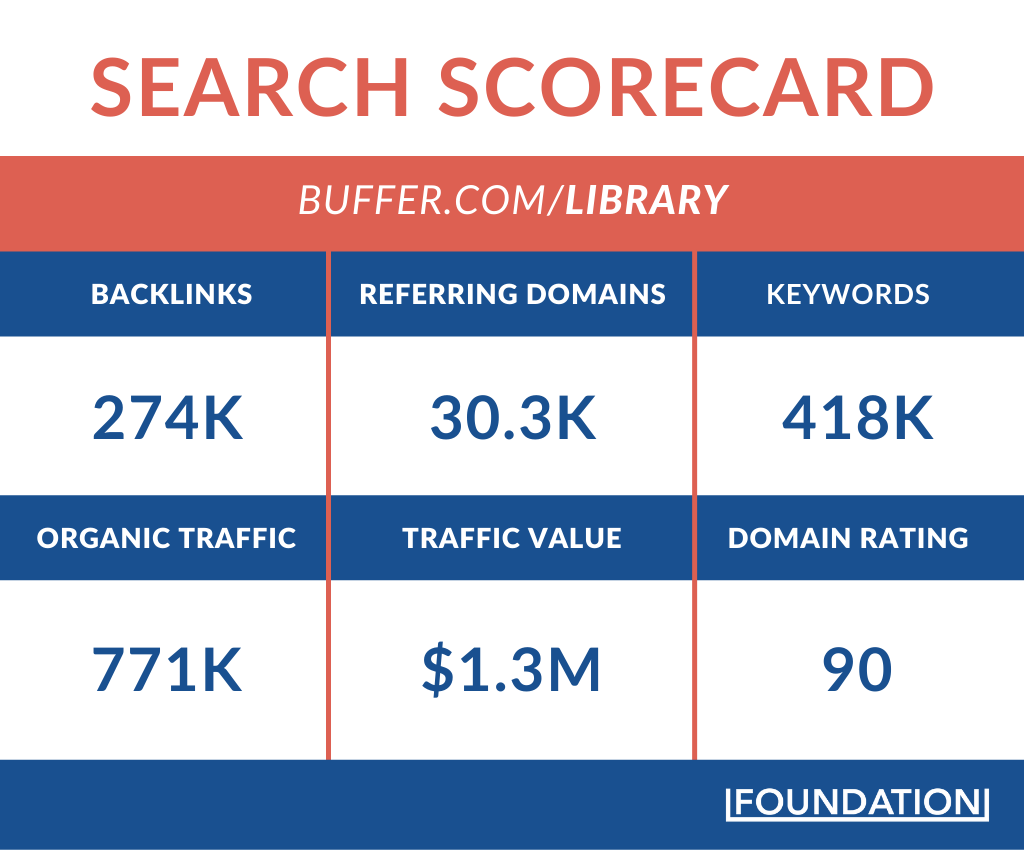

On the other hand, the Resources subdirectory ranks on 101k keywords and drives 53k sessions per month. These numbers aren’t as high as the Library subdirectory but are still very respectable. Also, new blog posts are added to Resources on a regular basis as well.
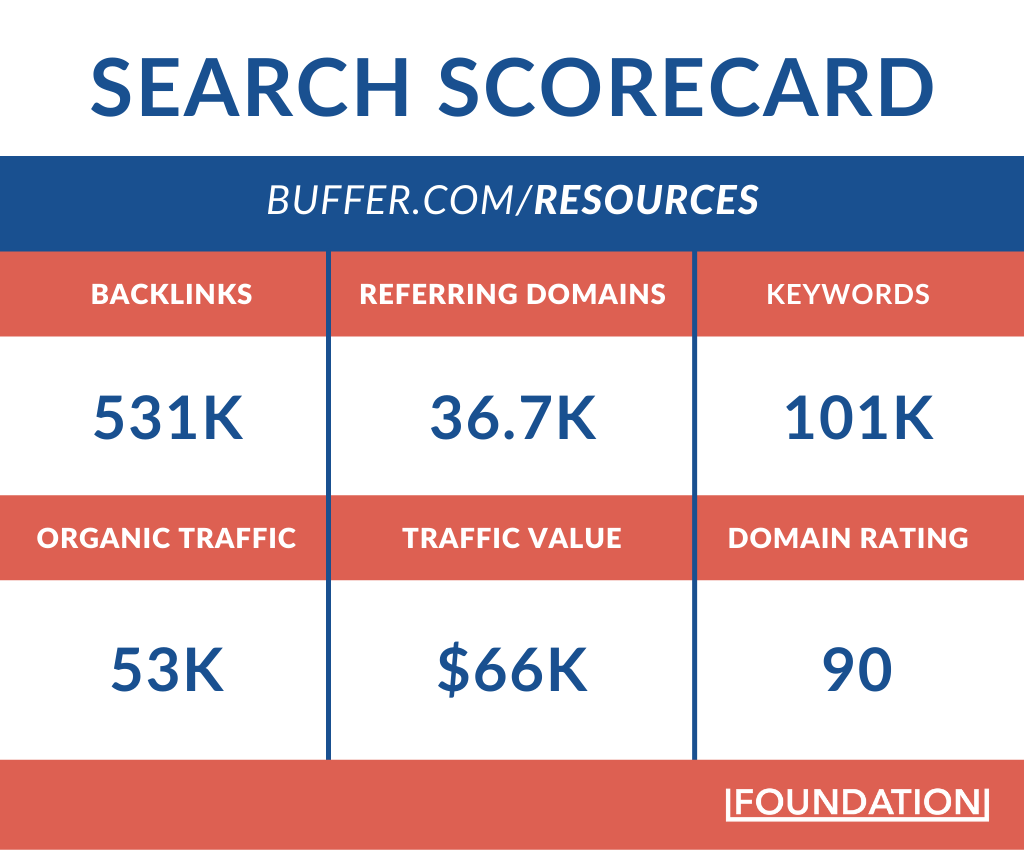

If you weren’t paying close attention, you might even think it’s a single blog. The Resources subdirectory is even called the Blog. But each of these blogs is built on its own distinct subdirectory.
Some people might say: “What’s the big deal…I bet a ton of brands do this!”
Well, when I looked at some other brands I couldn’t find a SaaS company that split its blogs into two distinct subdirectories like Buffer did.
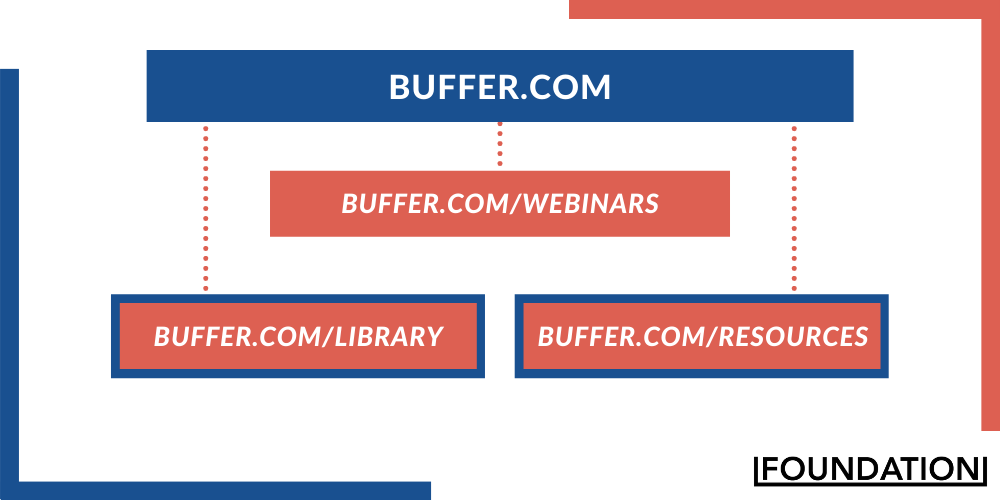

Hubspot has a single blog subdomain where they publish most of their blog posts and separate subdirectories that house things like ebooks, videos, and courses.


Hootsuite, a direct competitor of Buffer, takes a similar approach with a single blog subdomain and other subdirectories for different types of content.
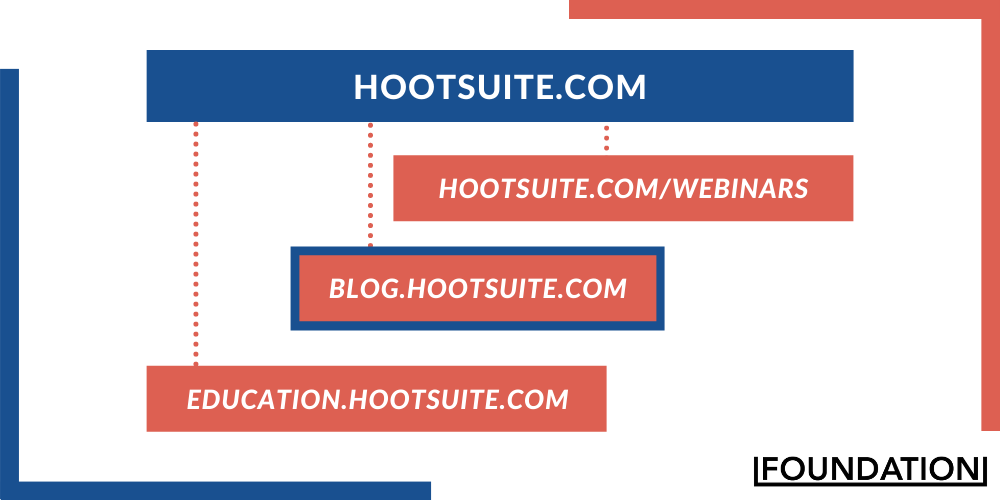

And even at Foundation, all of our blog posts are housed on the Labs subdirectory.
I feel like this approach is very common, and we could find hundreds of other examples from other SaaS brands.
So that brings us back to the question of why would Buffer do this?!
We have to rewind a few years to explain it.
Buffer built their first blog on a different domain
One of the FIRST rules of building an SEO-driven blog, resource, landing page, or content cluster is …it should be on your company domain.
However, back in 2011 Buffer built their first blog on blog.bufferapp.com and continued to use that subdomain until around 2019.


This makes sense because Buffer was originally built on bufferapp.com, not Buffer.com.
Before Buffer got their current domain, it was owned by a vinyl manufacturer. Buffer only started using the Buffer.com domain around 2015:
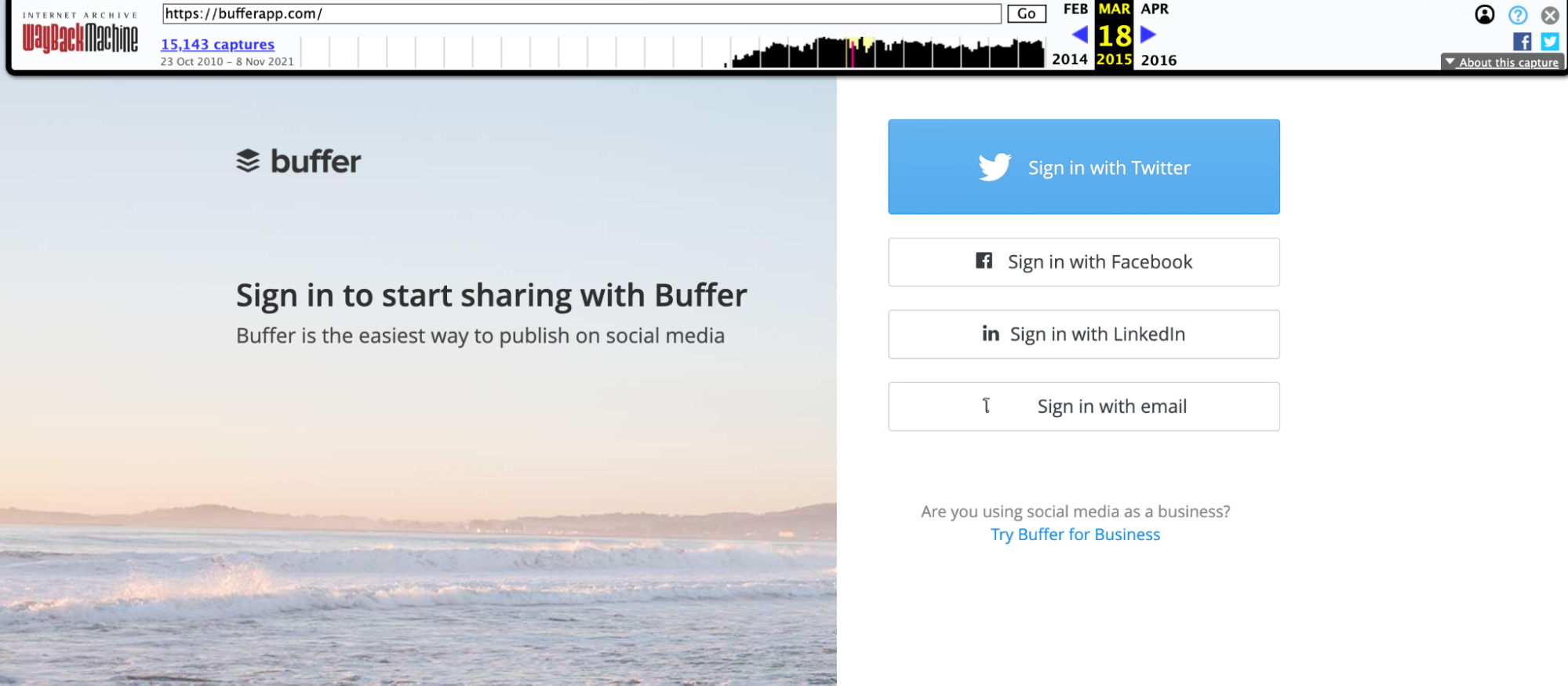

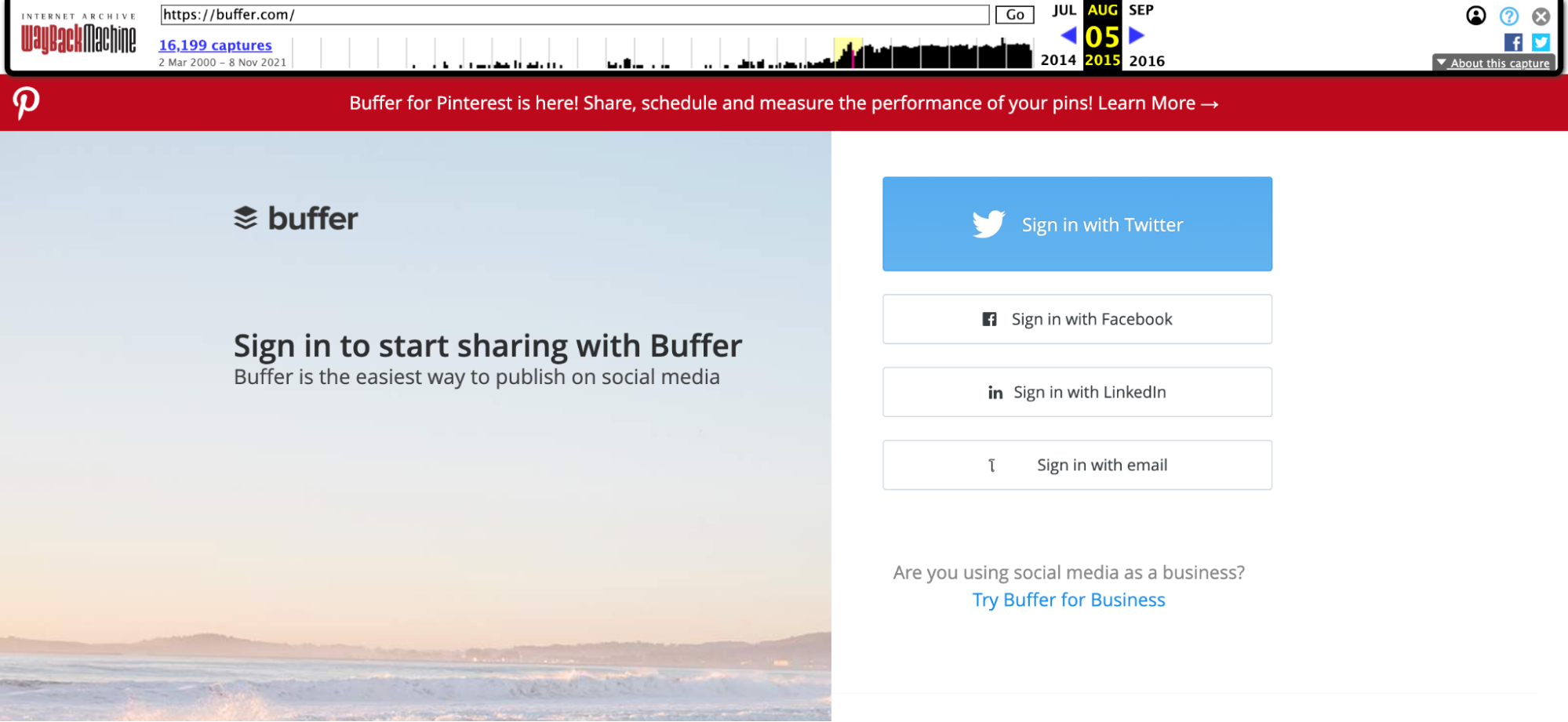

But they continued to use the blog.Bufferapp.com until 2019:


So for about four years, Buffer was building links, getting SEO benefits, publishing content, and more to a completely separate domain.


This is wholly different from driving links or traffic to a subdomain like we saw with Hubspot; it was on a completely different domain for many years.


One domain had the Buffer homepage and another one had the blog. In the eyes of Google, these are two separate entities.
Take a minute to consider how many content marketing and SEO best practices this breaks!
Basically all of them.
Not only was this confusing the search engines, but it also probably left many Buffer users a little puzzled.
Yet, I get why they didn’t want to move the blog to the main Buffer domain. It’s hard to change something that is technically working and helping your company grow.
At its peak in 2018, this subdomain was driving around 650k sessions a month, ranking on about 735k keywords, and bringing in about $1M in traffic value per month.
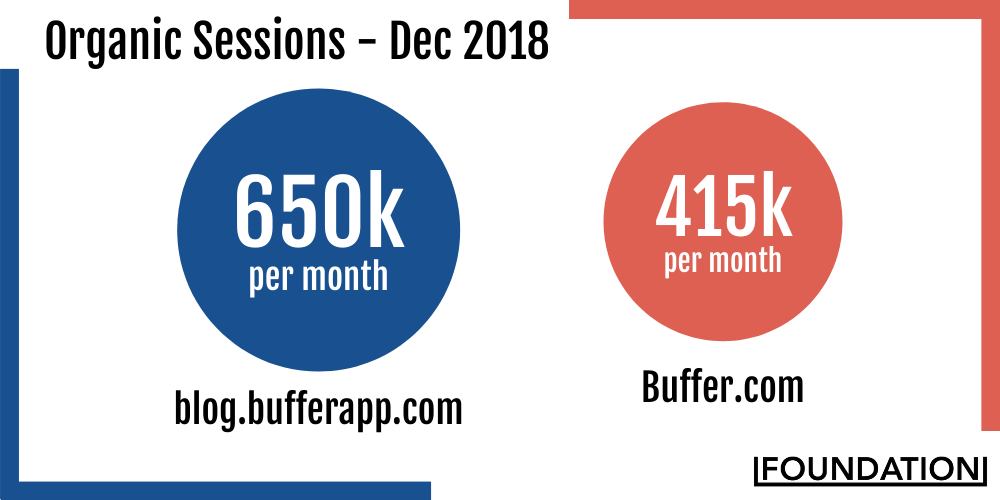

At the same time, the whole Buffer.com domain was driving 415k sessions, ranking on 265k keywords, and bringing in about $600k in traffic value per month.
It was still INCREDIBLY valuable to the team, even if it was on a wholly different domain.
As you can see, it would be hard to abandon the blog.bufferapp.com domain from just a numbers perspective, not to mention all that was happening behind the scenes.
So why am I telling you all of this? Why does it matter that Buffer built its blog on a separate domain?
It matters because that decision to have the blog on a wholly separate domain is a huge reason why they have two separate blogs now.
Buffer deletes their original blog…kinda
I’m guessing there had been discussions about moving the blog to the main Buffer domain for years, but there were no public moves made until late 2018.
That’s when the /Library subdirectory started popping up online:


Before that date, a similar page had been called the blog.bufferapp.com domain home.
By the beginning of 2019, the blog.bufferapp.com domain would be gone.
Well, not gone, but inaccessible. And in the eyes of Google, it might as well have been removed from the internet.
So what did Buffer do with almost 10 years of content and blog posts? Is it gone forever?
Nope, but it’s not on the blog.bufferapp.com domain. That is gone.
Try going there, what happens?
Redirect!
As you saw in the example above, they started moving all of this content to both the /Library and /Resources subdirectories.
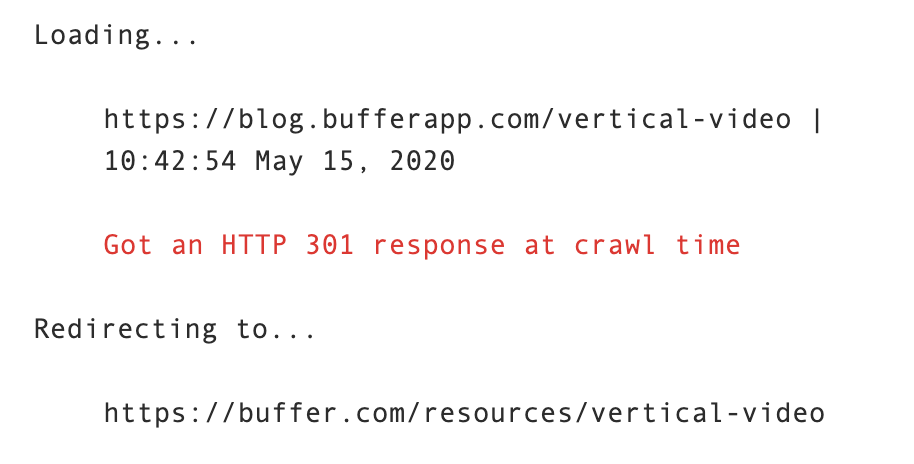

Using 301 redirects, they effectively deleted the blog.bufferapp.com content and moved it to the two subdirectories.
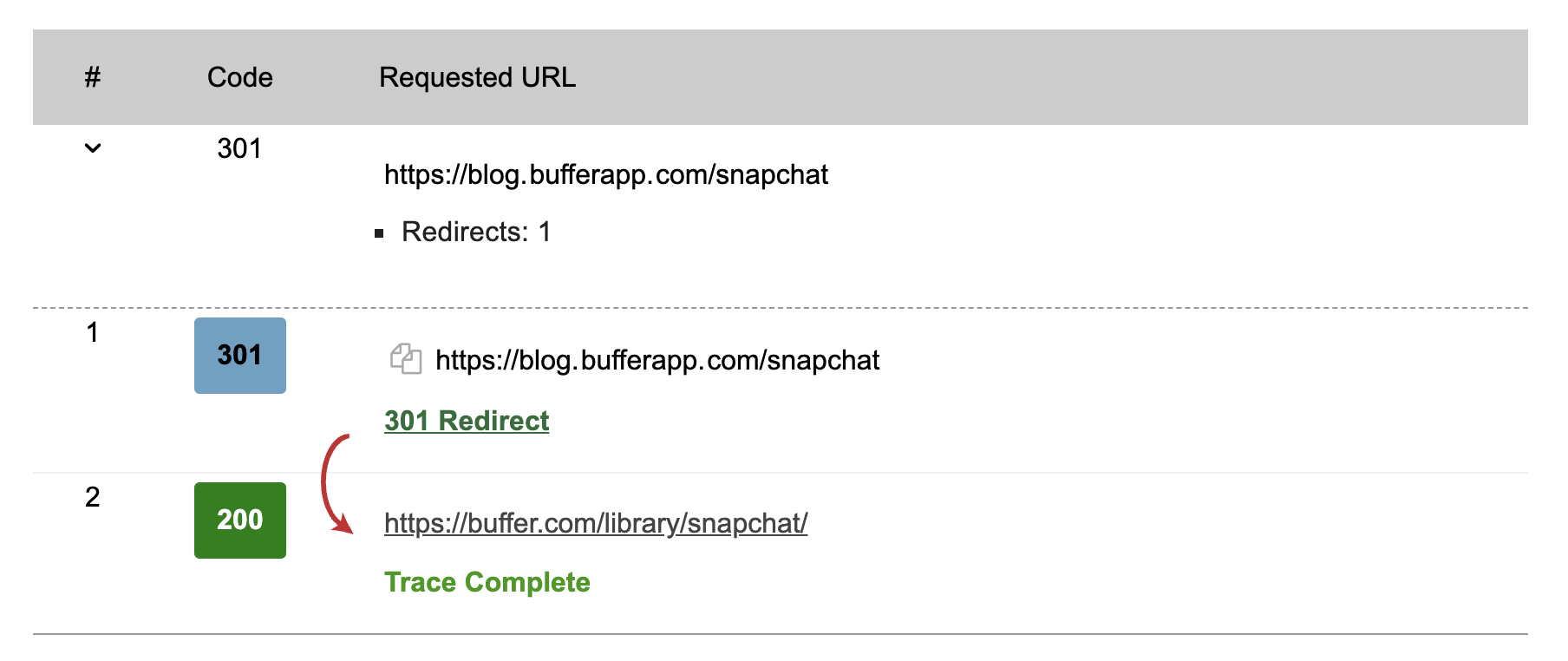

For those who aren’t familiar with 301 redirects, they are permanent redirects from an old URL to a new one that the site owner specifies.
According to Hubspot, 301 redirects give all of the ranking power of the old page to the new one. In the eyes of Google, the original page doesn’t really exist anymore.
Using these redirects is essential for brands that have created a TON of content over many years, and don’t want to lose any SEO juice by moving that content to a new location.
However, getting these redirects live was not a minor task: thousands of blog posts, articles, and more were on the blog.bufferapp.com domain.
Yet, they pulled it off masterfully.
Some of the content was moved to the /Library, and some to the /Resources subdirectory. (We will get into that in the next section.)
All you have to do is take a look at the change in search traffic volume to see when the redirects started taking place.
At the beginning of December 2018, the /Library subdirectory was driving ZERO organic traffic, ranked on no keywords, and might not have even been live!
By the end of January 2019, that same subdirectory was driving 458k organic sessions, ranking on 555k keywords, and driving around $875k in traffic value monthly.
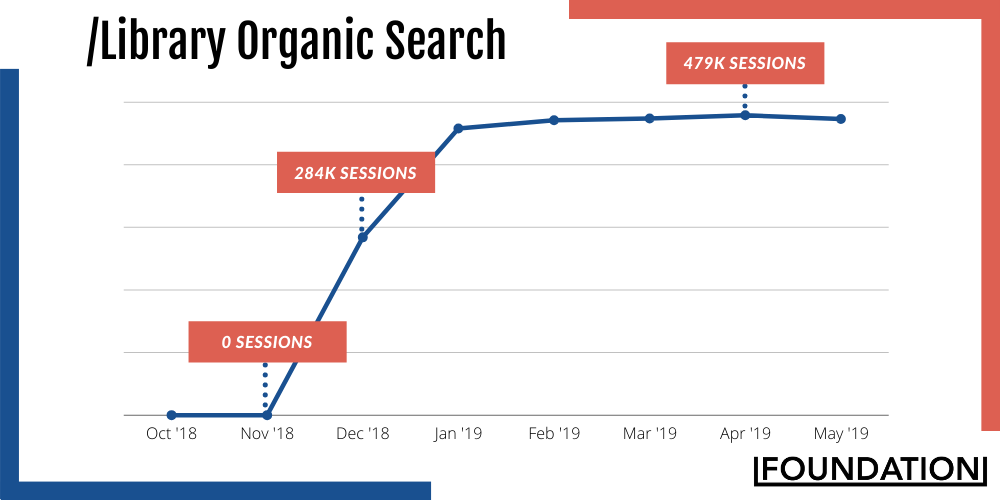

That’s impressive growth.
The /Resources subdirectory didn’t really start driving organic traffic until the end of February 2019 but within about 30 days, it was driving 101k organic sessions, and ranking on 387k keywords.
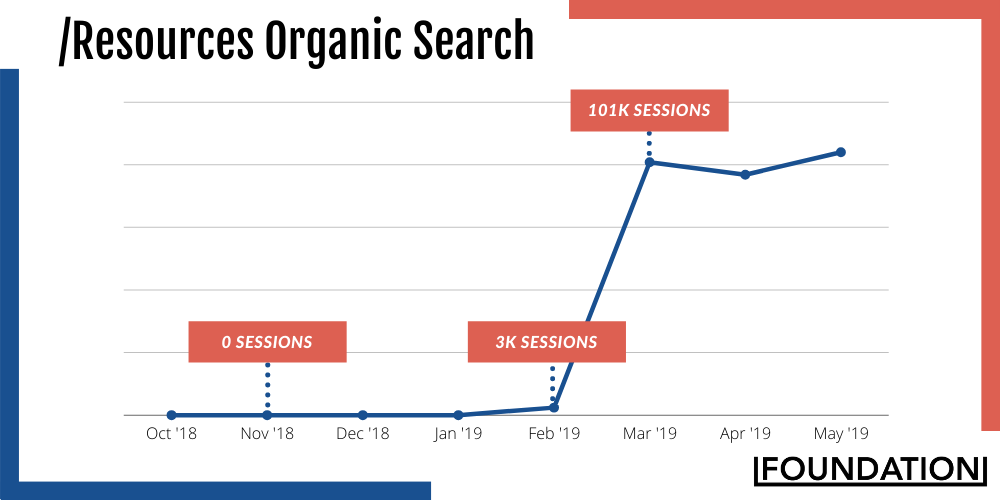

Mid-December of 2018 is also when you see the organic traffic to blog.bufferapp.com fall off an SEO cliff–dropping from 658k organic sessions to 137k in January 2019 and to almost zero sessions by April of 2019.


Buffer accomplished a great 301 redirect deployment. Almost overnight Buffer deleted their old blog and didn’t really miss a step or lose much organic traffic with their redirects.
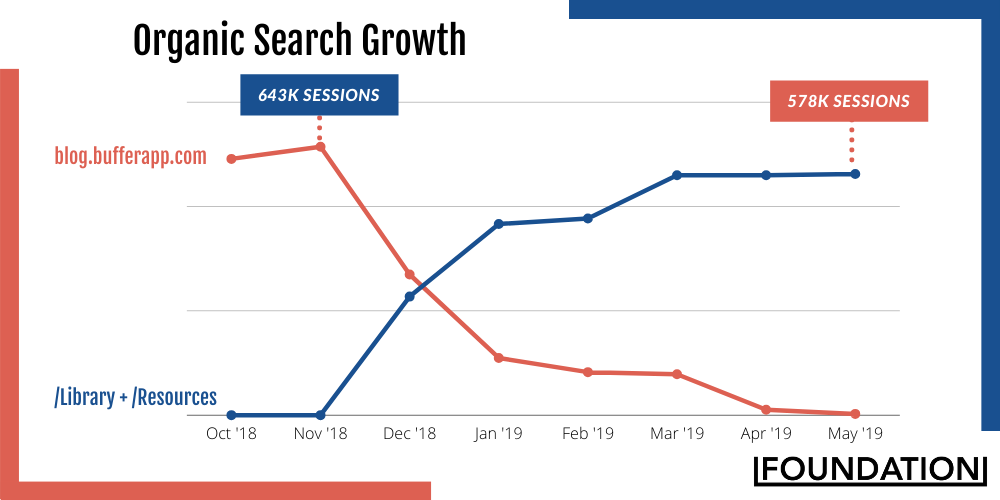

All of this is well and good but doesn’t explain why they have two blogs.
They could have just moved all of this content to a single subdirectory called /Blog or something. That’s what most brands would do!
But they didn’t, Buffer made the conscious decision to have two separate blogs.
This is where the true genius of Buffer’s search and content marketing strategy comes to light.
Buffer builds an SEO moat with the /Library
In the previous section, I outlined how the blog.bufferapp.com domain was erased from history. And all the past content was moved to /Resources and /Library subdirectories.
That’s usually what happens with massive redirect projects. No one should be surprised by that.
The true masterstroke was how they determined what content would be added to each subdirectory.
At first glance, it seemed like Buffer was randomly adding blog posts to the /Resources or /Library subdirectories.
For example, this article about Instagram Analytics was moved to the /Library:


And this post about Facebook colors was added to the /Resources subdirectory:
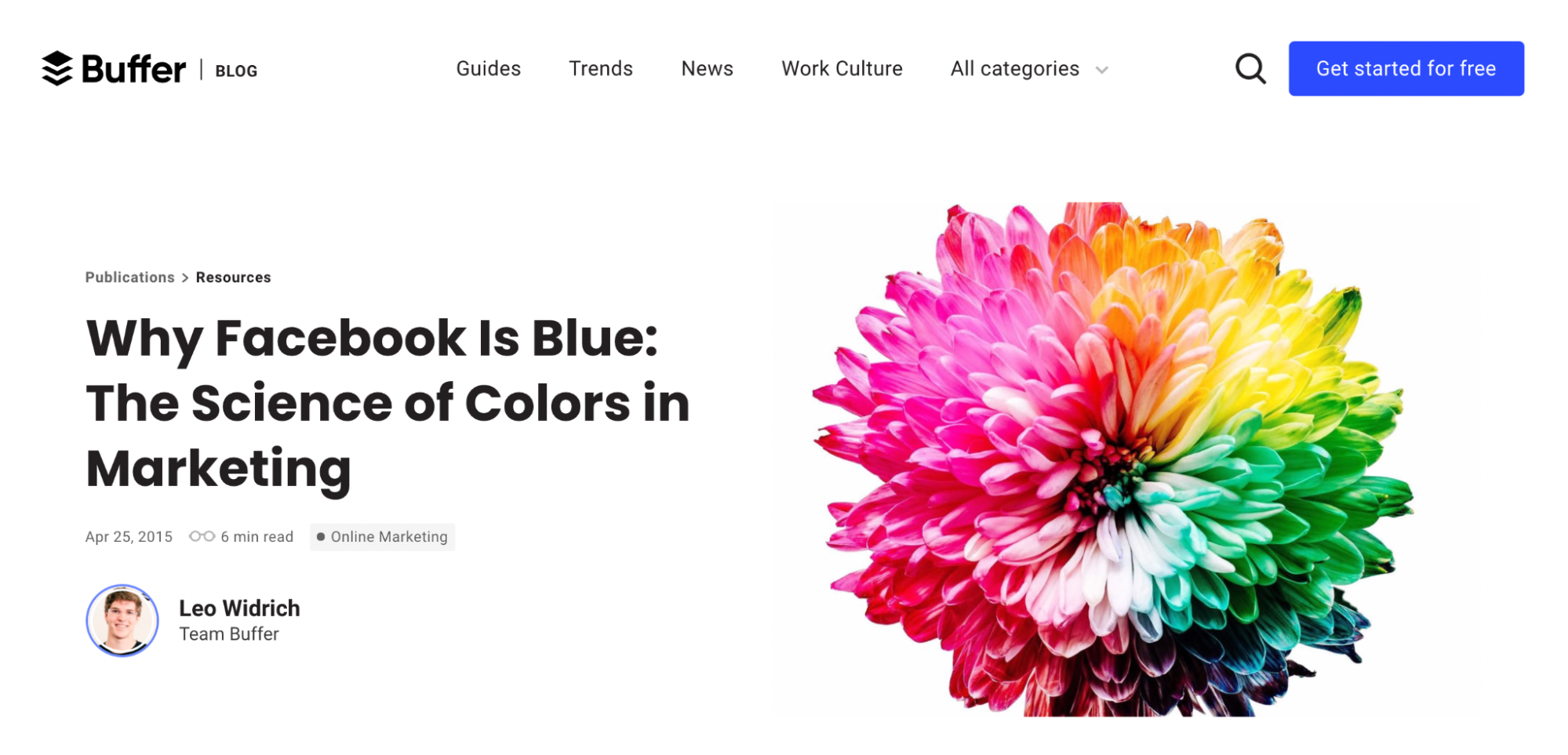

It took some serious digging, but I figured it out.
From the beginning, the /Library subdirectory was built to be an SEO-driven blog. And this decision has helped them to build out an extremely powerful content moat to this day.
Almost all of the content that was moved from blog.bufferapp.com to the /Library subdirectory was already ranking on a big keyword, matching their main content clusters, or driving significant organic traffic.
Anything that didn’t fit into those three categories was republished somewhere else.
Don’t believe me?
First, let’s just look at the current organic metrics for the /Library and /Resource subdirectory:
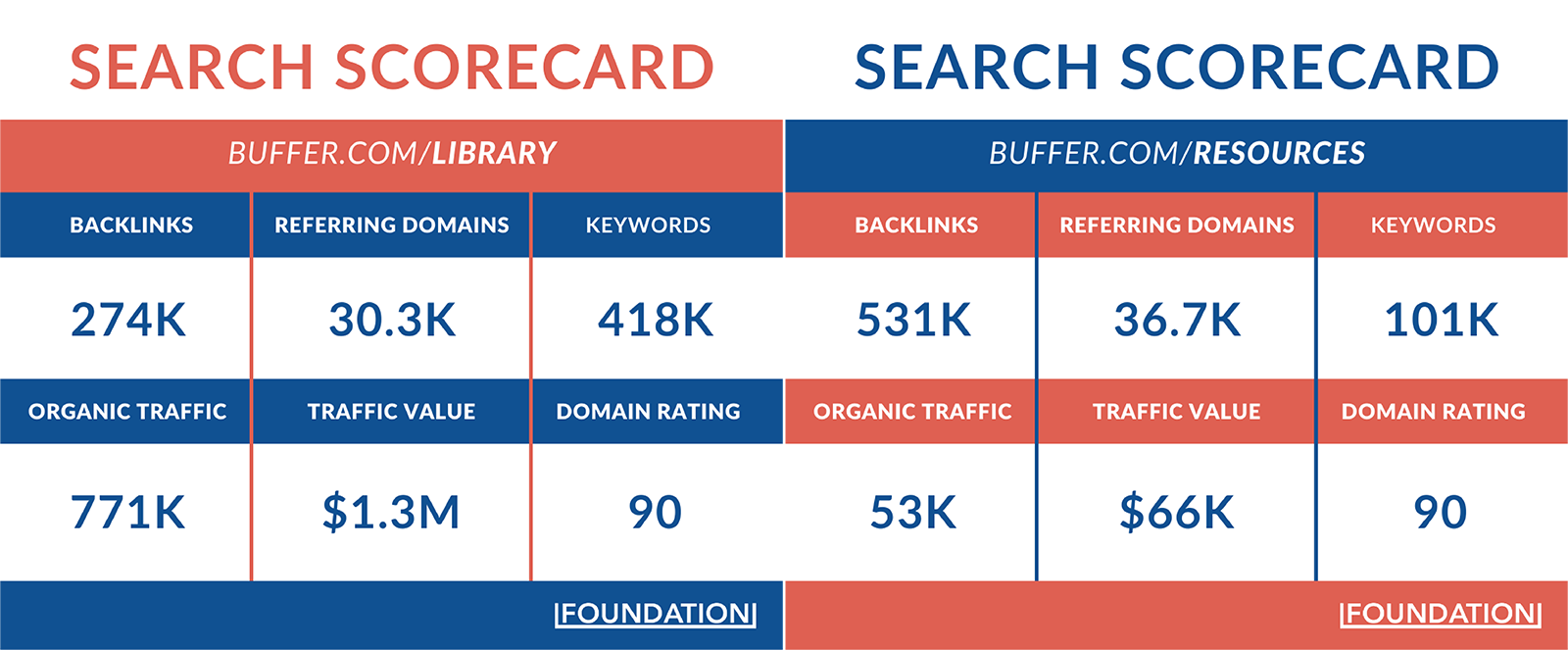

As you can see, the /Library subdirectory drives almost 14x as much organic traffic, ranks on 4x as many keywords, and has a traffic value that is around 18x higher!
If you take a step back and look at the whole site, the pages that are driving the most organic traffic are all on the /Library subdirectory:
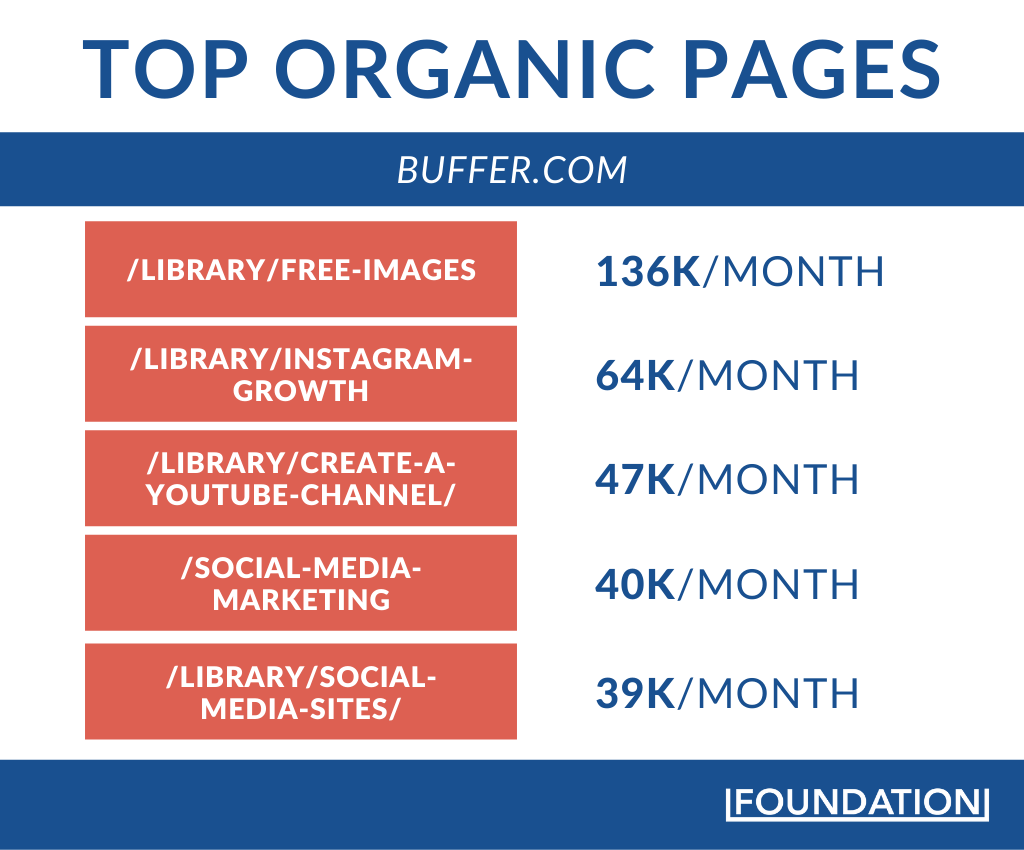

These few pages are driving more organic traffic than the entire /Resources subdirectory!
Just from that alone, you should be able to confirm that Buffer built the /Library to be SEO-focused from the get-go. They mainly focused on social media and other marketing keywords with their content.
We can even track the transition from blog.bufferapp.com for a few of their top-ranking articles.
The article that focused on Free Images was originally published on the blog.bufferapp.com domain right before they made the transition:
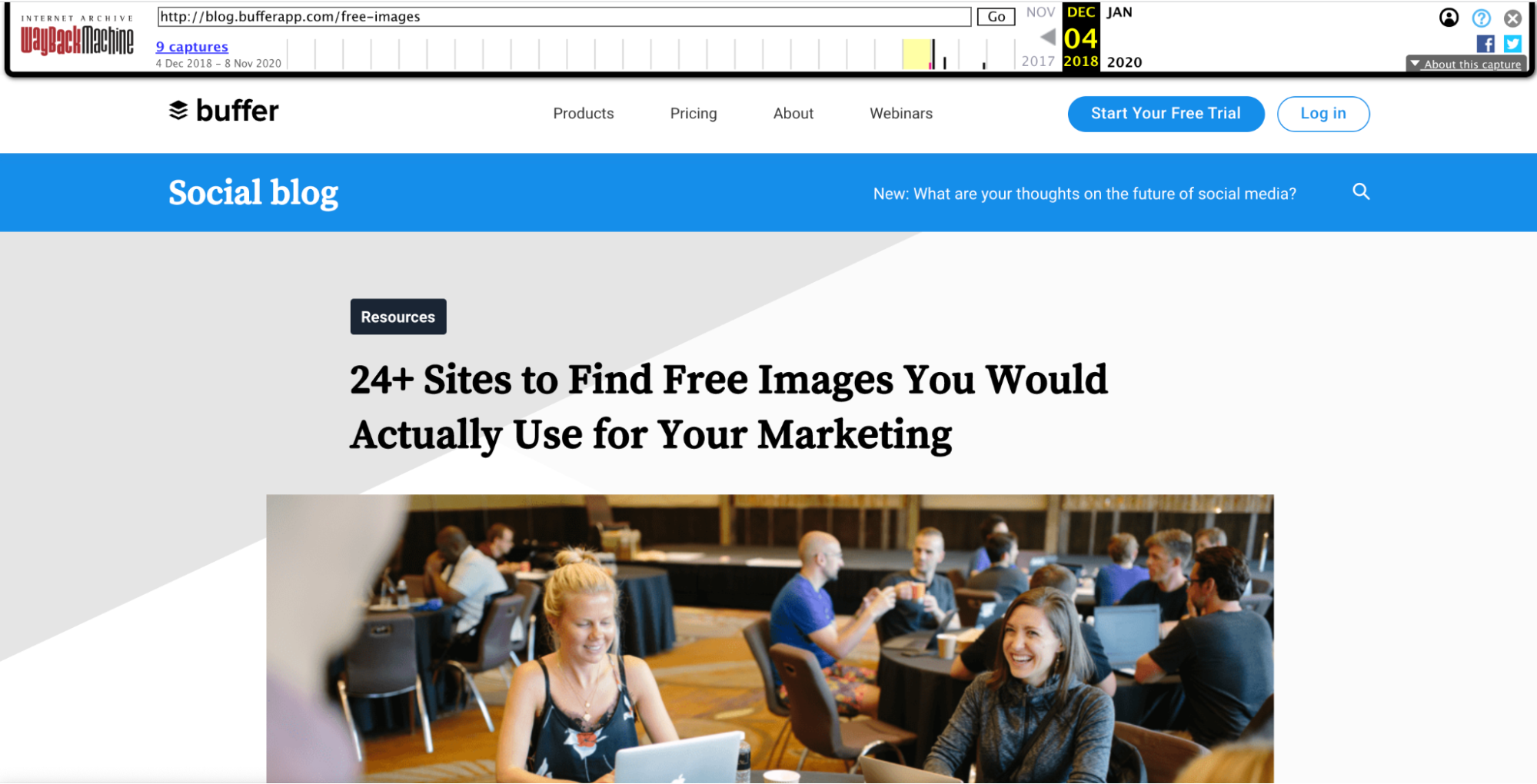

The previous article that talked about Instagram Growth was originally published no later than 2015:
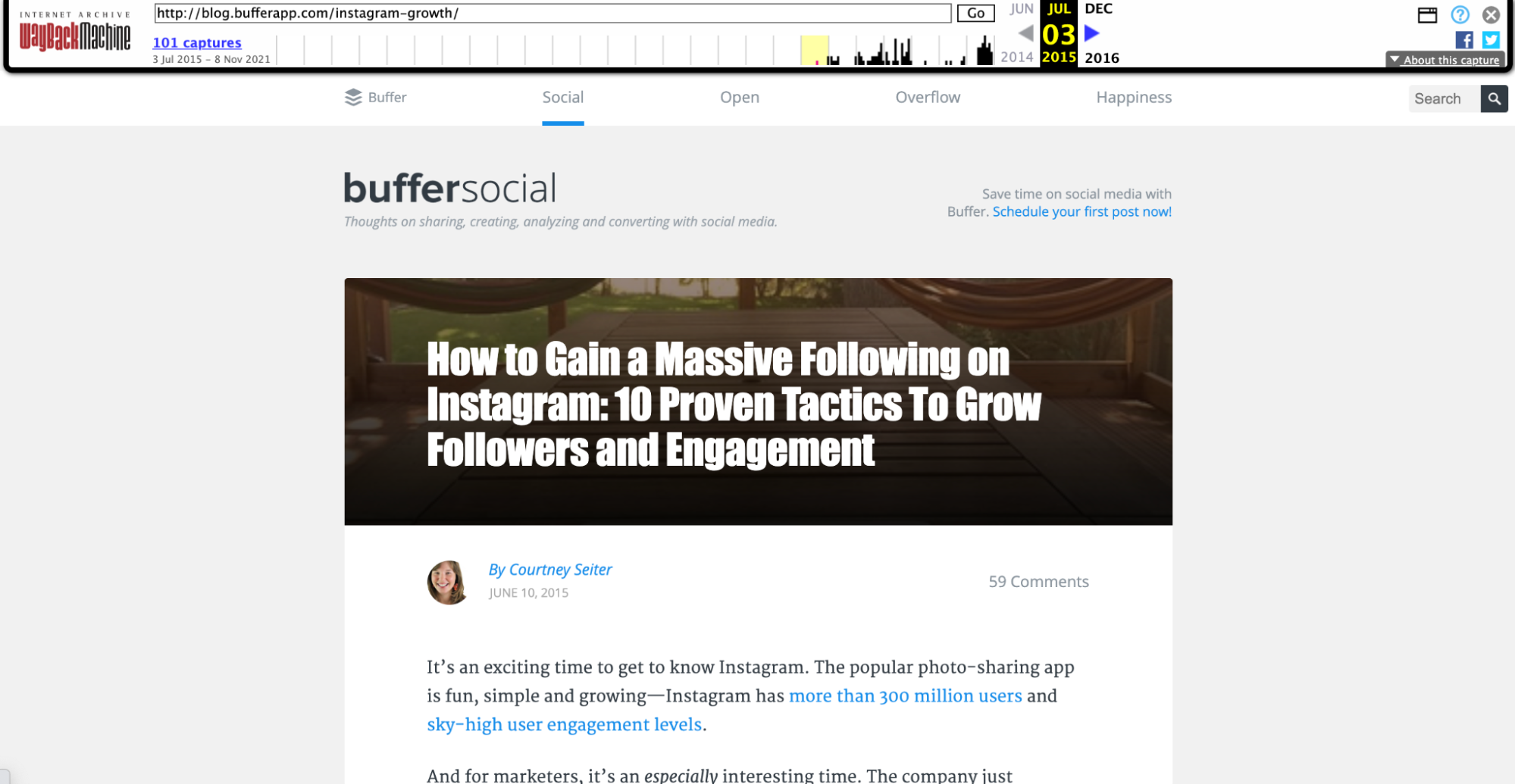

And the article that teaches you how to create a YouTube channel was published in 2016:
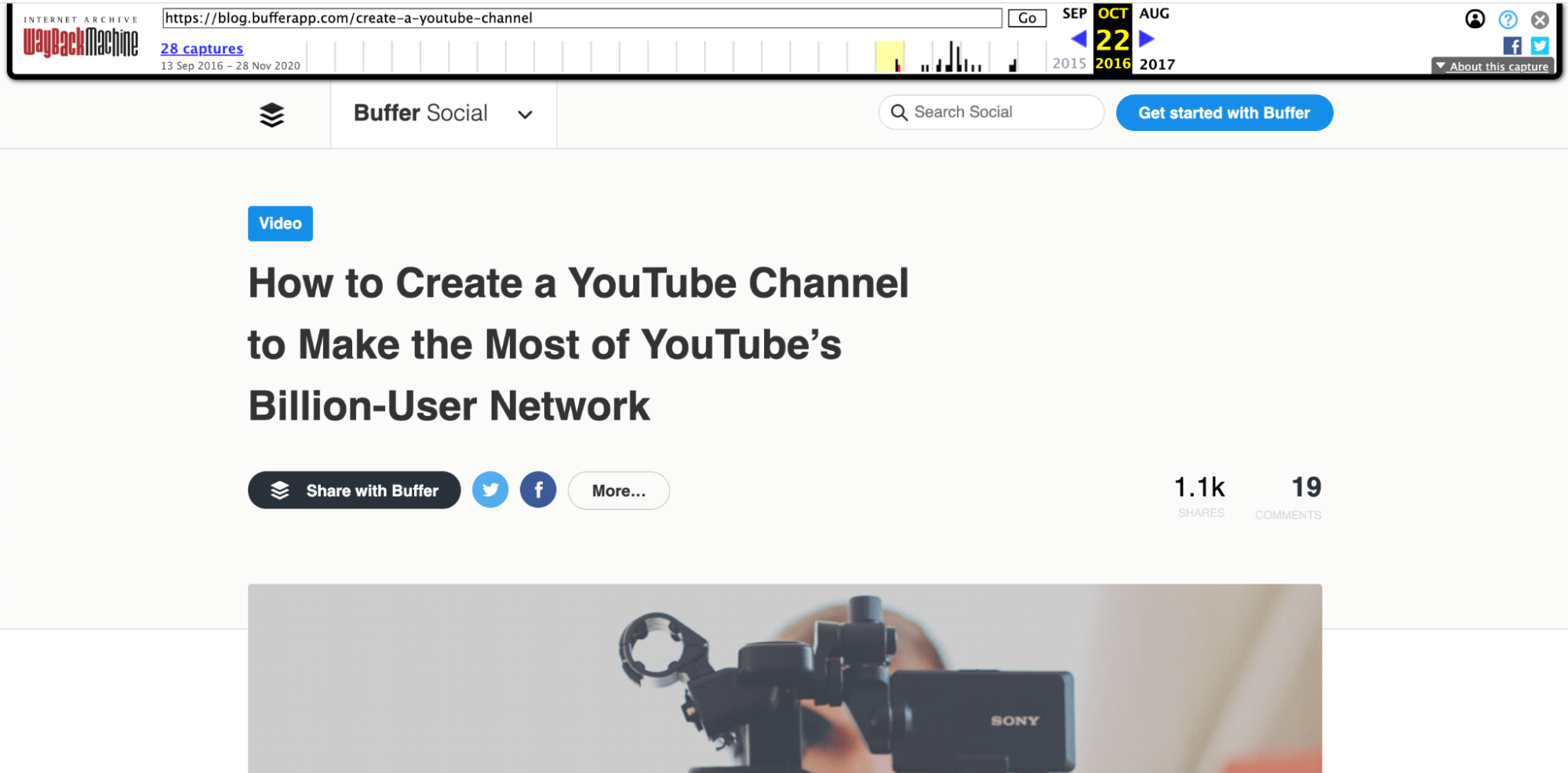

These days, if you try going to any of those blog.bufferapp.com links, a 301 redirect will automatically take you to the corresponding page on the /Library subdirectory.
On the other hand, this blogging article that was published before blog.bufferapp.com was redirected, but likely doesn’t match their SEO goals, was pushed to the /Resources subdirectory:
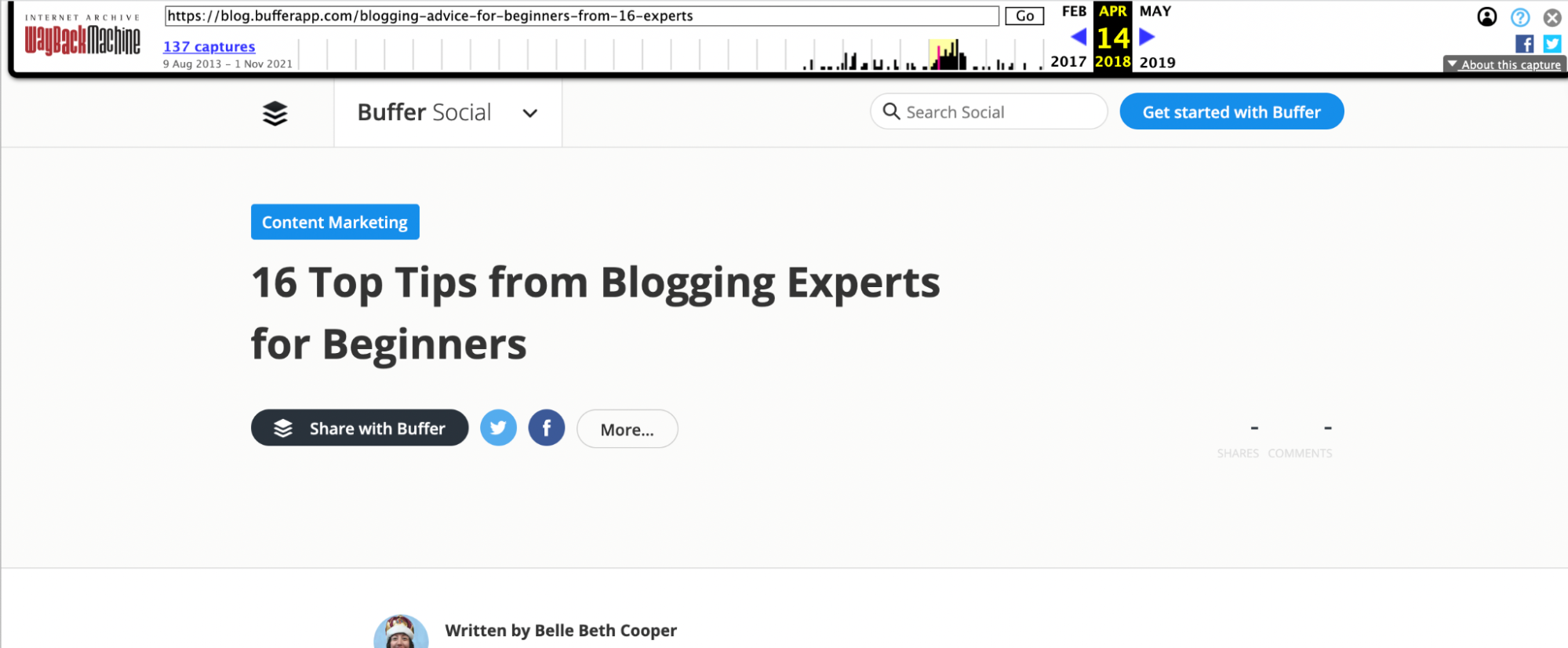


The layout, formatting, and more of all the /Library articles are also optimized for search especially when compared to articles on the /Resources subdirectory. Other than the metrics, this was one of the first things that made me think the /Library subdirectory was built exclusively for SEO-driven content.
For example, the YouTube article that is likely targeting the “How to Create a YouTube Channel” we referenced a bit ago features:
- A search-driven URL
- A search-driven title
- A search-optimized table of contents
- Secondary & longtail optimized headers
- And a whole lot more.
This has allowed them to grab the top spot, featured snippets, and more with a lot of content on their /Library subdirectory.


One more thing–this approach has allowed them to build out a few content clusters with their SEO-driven content on the /Library. also have a handful of content clusters
What might those content clusters be? Buffer spells out a few of them for you in the footer of the /Library pages:


So as you can see, Buffer has effectively created a separate SEO-driven blog on their /Library. And they continue to publish content on that subdirectory.
This allows them to keep all the positive SEO and ranking factors that they built up during the 10 years that content lived on blog.bufferapp.com and move them to the /Library.
All the other articles that weren’t SEO-driven were then moved to the /Resources.
As morbid as that sounds, this move was just as smart as moving all their SEO-driven content to /Library–especially since some of those posts still were getting new links!
And a brand & backlink juggernaut with /Resources
Just because the /Resources subdirectory isn’t getting the same organic traffic and attention, that doesn’t mean it’s not important to Buffer’s marketing strategy.
These days they use it to publish case studies, company updates, and other topics that don’t really fit the SEO-driven mantra of the /Library.


It’s almost like how Buzzsumo has spun out a new blog called the Wellbeing Hub to talk about things outside of their normal scope.
As I mentioned earlier, those articles that were previously published on blog.bufferapp.com were either shifted to the /Library or /Resources subdirectory.
Those articles that likely didn’t meet certain search-driven criteria were shifted to /Resources.
Examples are articles that were not really related to social media:



Some fun takes on social media topics, a few time-sensitive articles, and as well as some downright random articles.
Obviously, none of these old articles matches the SEO-heavy goals Buffer had for the /Library. Why did they even move them to the new Buffer.com domain at all?
Some people might say it’s because deleting all those pages might mess up a ton of internal linking.
But I didn’t find many pages that crosslinked from the /Resources subdirectory to the /Library. That little finding is another reason why I feel the /Library subdirectory was built to be a repository for SEO-driven content.
So let’s cross that idea off the list.
The next possible reason also deals with links–specifically…
Backlinks.
Over the years that some of these pages were live on blog.bufferapp.com, they were stacking up hundreds, if not thousands, of backlinks.
The /Resources subdirectory has around 532k backlinks, compared to approximately 277k backlinks on the /Library subdirectory.
The blogging tips article referenced above had about 2k backlinks, with a ton of 301 and historical backlinks.
This article has about 1.5k backlinks and was originally published back in 2018 on the blog.bufferapp.com domain:


And this famous report, that nearly every marketer quotes, has about 7.5k backlinks!
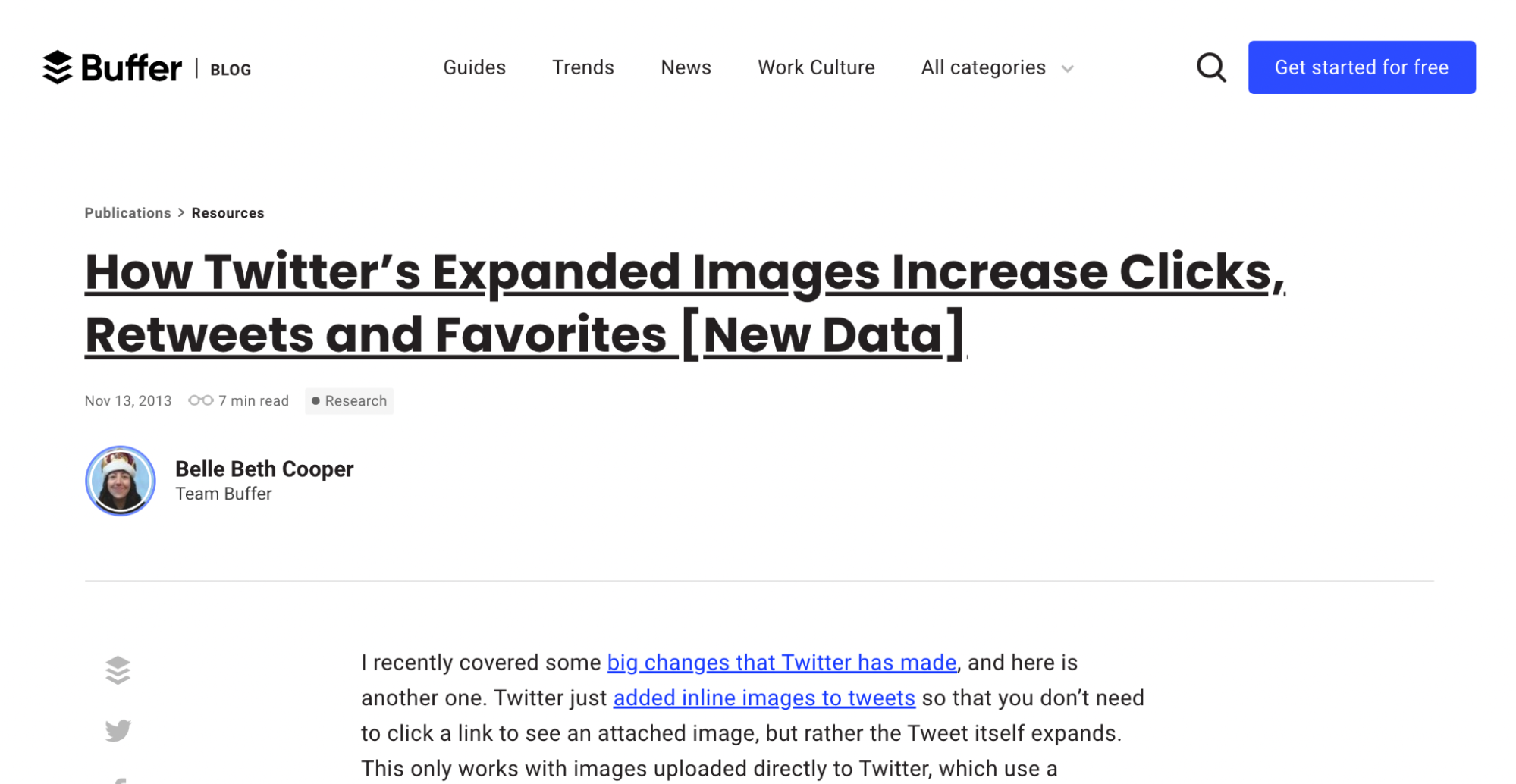

Additionally, a majority of these backlinks happen to be on Buffer branded keywords:
- Buffer – 4k domains, 19.4k links
- Buffer Blog – 728 domains, 8.3k links
- Buffer Social – 394 domains, 6.8k links
On the /Library subdirectory, some of the top anchors include significantly more search-friendly keywords like social proof, social media platforms, and more.
Since Buffer is a regular word in addition to being a company name, it’s a bit harder to make sure you rank for that term. But all of these verifiable brand-heavy backlinks are extremely helpful.
Additionally, Buffer has positioned the /Resources subdirectory very well for new users. When you search for “Buffer”, the /Resources blog is featured in the main result:
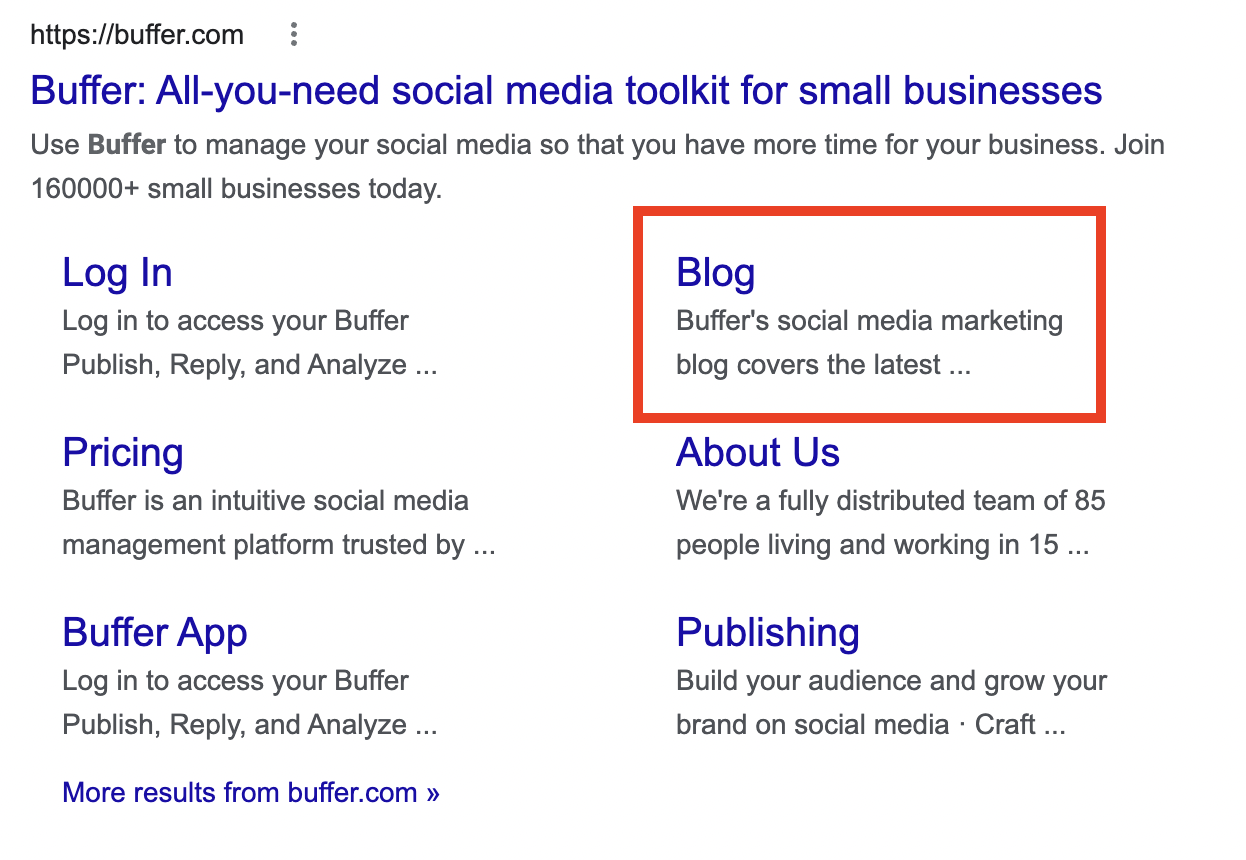

It’s also on the Buffer home page:


The content shared on the /Resources page is tailored for people very early in the buying stage. This simple case study is a good example:


If these people searched “twitter advanced search” they would hit the /Library subdirectory first.
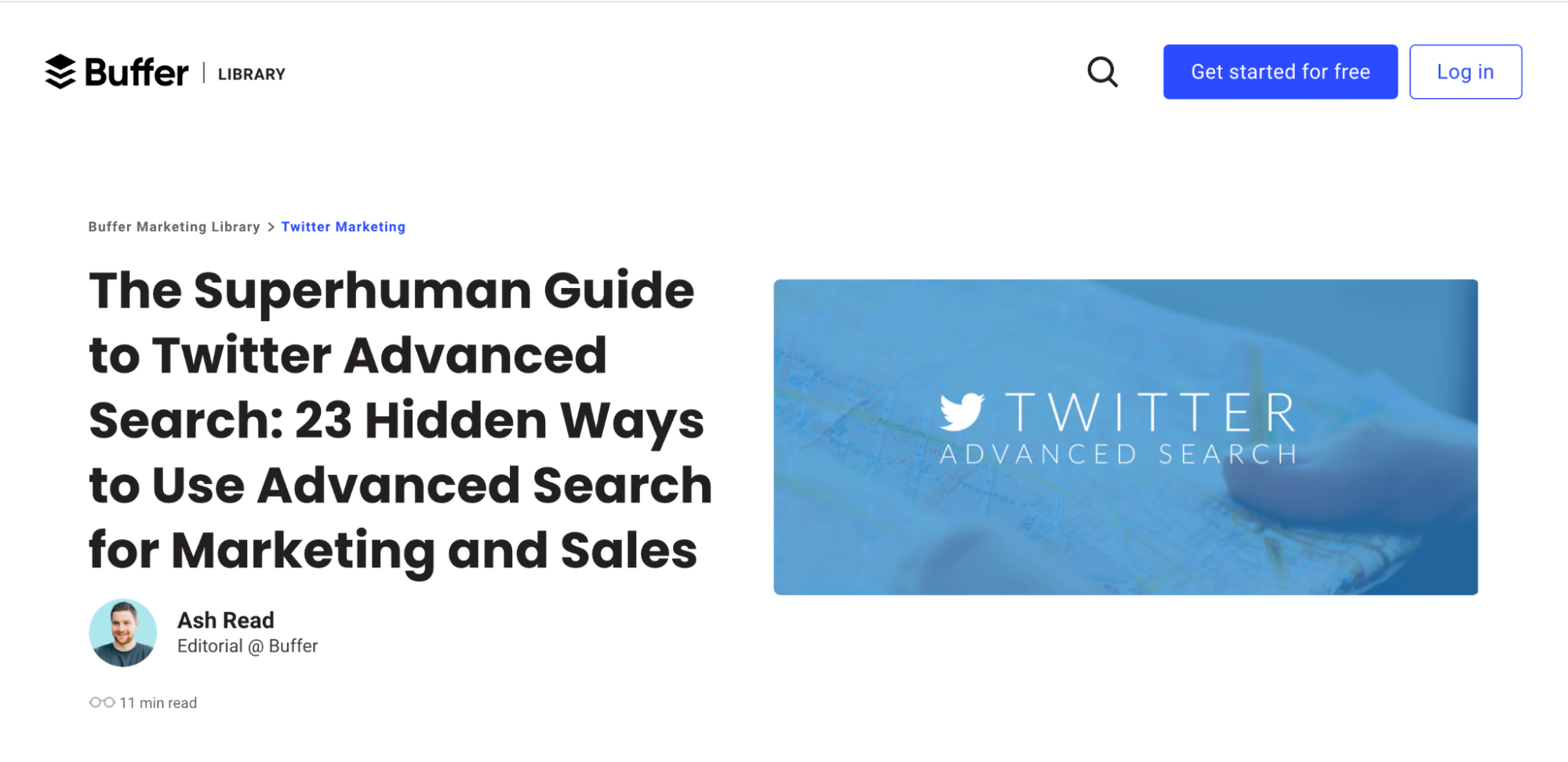

Both types of searchers would have very different intentions and goals.Buffer has done a great job of putting each type of searcher in the right place.
As you can see, each of these subdirectories has a ton of value to Buffer.
And it makes a ton of sense for them to have two blogs!
How you can use this tactic
Deleting their original blog to create two new subdirectories was a huge undertaking, but the Buffer team did the job amazingly well.
Everything was handled so smoothly that organic traffic to the Buffer domain literally doubled in a few weeks. Jumping from around 445k organic sessions in December 2018 to about 900k sessions a month later.
Not every brand can handle a redirect so smoothly: companies have been ruined when trying–and failing.
This approach has also allowed Buffer to build an incredibly focused content moat that has helped them continue growing at a steady pace to this day.
The traffic growth is a great signal, but the way they were able to turn their somewhat random blog posts into a content juggernaut is even more impressive.
Before the transition, there was content about literally everything related to marketing, social media, startup life, and business. This was probably giving Google a lot of mixed signals on what the Buffer blog was all about.
However, they were extremely picky about what was moved to the /Library and that was a masterstroke.
If they would have just transferred all of the content that was on the blog.bufferapp.com domain I don’t think they would have seen such growth. And their content clusters wouldn’t have been so well defined.
These multiple content clusters focused around social media topics, likely showing Google that they are a force to be reckoned with in the crowded social media space.
That said, they continue to publish content to both the /Resources and /Library subdomains to this day.
I want everyone to remember that even if you have an SEO-driven content strategy, there is still a lot of room for other content in your marketing stack. It might just have to live on another subdomain or subdirectory.
Not everything you publish has to directly tie back to keyword research or search data.
And the great companies, like Buffer, know this.







